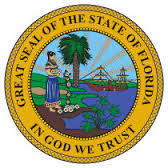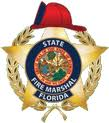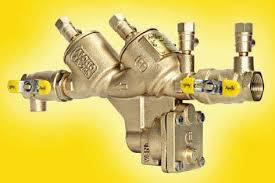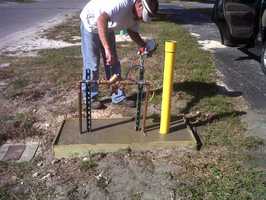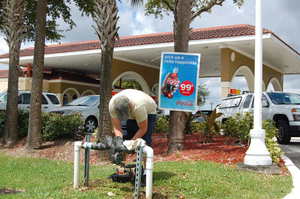Backflow Prevention
What is Cross-Connection
Cross-connections occur when safe drinking water mixes
with other unknown contaminants. If backflow occurs,
these contaminants could mix with the potable drinking
water system, possibly causing the water to have
unusual tastes, odors or colors. Backflow preventers are
required to prevent possible cross-connections. A cross connection
could occur when a garden hose is left in a
pool or in a basin with soap, such as when washing a
car. Water could flow back through the hose and into the
community water supply.
What is being done to prevent backflow
The State of Florida and federal government mandate
backflow prevention programs. According to the U.S.
Environmental Protection Agency, proper maintenance
of a water distribution system must include a backflow
prevention program. Florida statutes also require a
backflow prevention device. City ordinance 97-148
mandates backflow preventers to protect the public
water supply from possible contamination. The City
code applies only to commercial properties and multifamily
residences with three units or more.
Why do I need to install and certify a backflow preventer
Backflow prevention devices must be installed on
multi-family properties with three or more units, as
well as on commercial properties. Since 1997, the
Building Division has been enforcing installation
of prevention devices on all new development. Prior
to 1997, installation and certification was voluntary.
Water Utilities Division staff has
been conducting an inventory of properties that do and
do not have a backflow preventer. All City facilities have
backflow preventers in place.
Recently, the Florida Department of Environmental
Protection discussed amendments to the state
Administrative Code requiring community water supply
providers to submit a written report, which includes
compliance with backflow prevention policies. In addition,
the County Health Department requested
records to document a Citywide compliance program. The
City is now following federal, state and local mandates
to make sure all properties have backflow prevention
devices to keep the water supply safe.
Backflow devices are used in plumbing systems
to decrease the chances of potable water being contaminated by any
debris and/or particles that may gain access into the water and "backflow"
into the main water supply.
There are only a couple of backflow devices that are commonly used.
These would be Doublecheck Valves and Reduced Pressure
Principle Valves. A Double Check Valve (also known as a
doublecheck, double check assembly, DC or DCA) has two, one way check
valves inside, in sequence, that allow supply water to enter but, if working properly,
will not let the water "backflow" into the potable water. The Second
device, a Reduced Pressure Principle Device
(a.k.a RP, RPZ, RPP, RPPZ) is similar to the device above but
has additional protection for the potable water, which is an extra
valve in between the two check valves that will open, releasing the water
out of the relief valve port under the device if it senses one of the check
valves to not be closing or sealing completely. Both of these
devices are testable by test ports on either side of the checks, allowing
a backflow tester to test and certify that these valves are working properly.
If the devices do not pass the inspection then it can either be repaired or replaced.


